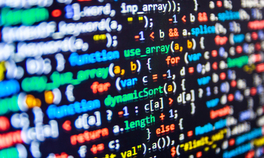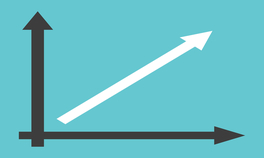
Today, data analysis comes part and parcel with improvement.
Companies in nearly every industry you can think of want professionals who can analyze data, and it’s not difficult to see why — after all, using data to drive results-based decision making is an imperative for organizational success. Countless innovations, services and success stories have been built on the foundation data provides. But information alone can’t cultivate success — a human perspective is necessary.
If you’re a problem solver who has a knack for numbers, data analytics may be the ideal career path for you. Read on for the basics of data analysis, what you’ll need to learn and a rundown of career paths!
What Is Data Analytics?
Data analytics involves collecting raw data and converting it into usable insights. For most companies, data analytics is used to construct research-based strategies and solutions. This work often involves big data, a term that refers to using large amounts of collected data to quickly identify trends and distill valuable insights.
While data analytics is hardly a new concept, newer processes and algorithms make it more efficient than ever. The use cases of data are limited only by the goals of a business. For example, a corporate firm might use data analysis to optimize workloads or get the most out of content distribution; a healthcare facility could apply it to better understand their patient base and care inefficiencies. The value gleaned from big data tends to involve cost reduction, better decision-making or creating new products and/or services.
The analytics process is similarly varied. The specific tools and methods used may vary depending on a given business’s needs and resources. That said, data analytics generally involves a few standard processes or tasks.
Let’s dive into a few of those now.
Asking a Question or Identifying a Problem
While it can be exploratory, data analytics is most often used to answer a specific question about a business or organization. It could help influence a cost/benefit analysis for a new product, track the success or failure of a new offering or even identify a new potential audience. In some cases, poor performance might spur businesses to use data analytics to identify hidden inefficiencies.
Defining Data Sets and Variables
If analysts want to tease out insights about a specific consumer base or operational process, they need to isolate the relevant data set. For example, analysts analyzing consumer behavior might isolate factors such as age, gender, demographic or income.
Data Collection
It’s intuitive; you can’t conduct an analysis if you haven’t yet collected the data. Analysts can gather information from a variety of internal and external sources. Various devices, software and platforms log users’ behaviors and preferences.
An online store, for example, keeps records of which products users tend to buy most often and can, upon request, generate information about the users who purchase that product. Data analysts can gather this raw data to produce insights into those customer behaviors to help drive business decisions.
Data Organization or Cleaning
Raw data sets are notoriously unreliable. They often include duplicate entries, incorrect information and other flaws that could skew an analysis if they are not “cleaned” from the set. Once an analyst organizes their gathered information into databases, they must spend some time fixing errors and editing out any data not relevant to the analysis at hand.
Data Manipulation
When an analyst accesses, moves or otherwise changes data, they manipulate it. Data manipulation can occur during every step of the data gathering, cleaning and analysis process.
Gathering Insights
Once an analyst has a clean data set to work with, they can probe for patterns and develop conclusions based on trends they identify. Predictive analytics tools can even empower an analyst to forecast how a data set might develop in the future. Analysts can then leverage this information into actionable insights for an organization.
Presentation
Data visualization involves translating trends into readily digestible graphs, maps and other illustrations. By visually presenting their findings, analysts can pass on what they learned to non-technical stakeholders and team members. The information passed along should always be actionable and easy to understand. If the data analytics process is about answering a question, the resulting presentation provides the definitive answer.
Why Learn Data Analytics?
Data analytics is a career on the rise. After all, data underpins just about every major decision a business makes and can offer a significant competitive advantage when leveraged thoughtfully. In this context, data analysts aren’t only useful — they’re necessary. If you’re looking for an in-demand job with high potential, data analysis fits the bill.
But having a handle on data analysis can be helpful even if you don’t plan to make a career in the field. Think about it. Data-savvy business professionals could use their analytical skills to attune their strategies to suit their consumers’ needs and marketers could better predict trends. Why would you pass up the opportunity to make yourself a more marketable and capable professional?
Skills covered in these tutorials:
- Pivot Tables
- VBA Scripting
- Fundamental Statistics
- Python Programming
- Machine Learning
- Business Intelligence
Introduction to Data Analytics
Getting started in data analytics can be an intimidating prospect. At the very least, aspiring data professionals will need to pick a core set of analytical skills and capabilities. Most people accomplish this by attending a four-year college program and majoring in a field such as statistics, mathematics or computer science. However, those who do not have the time or inclination to pursue a four-year degree can also cover data analysis basics via a bootcamp program or self-directed study.
We’ll dive more into the details of how to become a data analyst later. For now, let’s address a few core capabilities you’ll need to have in your academic pocket before you start learning data analytics.
Statistics
As the bread and butter of data analytics, a thorough knowledge of statistics is fundamental to understanding and interpreting data sets. Whether it’s working with probability, plotting out data visualization techniques or discovering deeper insights from data, data analysis requires statistical skills.
Exploratory Data Analysis
Often abbreviated as EDA, exploratory data analysis is an approach to measuring data that generally involves graphing out information to find patterns. Visualization of a data set can help data analysts discard irrelevant data, generate new questions and refine their search.
Machine Learning
Machine learning has become a popular subject in recent years as data analysts use it to detect patterns within large data sets. The field is related to, but distinct from, artificial intelligence (AI). Machine learning can be applied to speech or image processing, as well as constructing more sophisticated robots. The programming language Python is often used in machine learning efforts due to its approachability and automation capabilities.
Get Program Info
Other Basic Skills
Saying that you’re an expert in data analytics is all well and good — but it’s your mastery of specific skills that will speak to your competence and value to a team. Employers generally expect to see candidates come in with many technical and soft skills such as communication and problem-solving. Below, we’ve listed a few hard skills that every aspiring data scientist should have on their resume.
Data Cleaning
As we mentioned earlier, data analysts spend a significant amount of time cleaning their data sets. Even with the improvement of algorithms over time, a considerable portion of collected data is junk that must be sifted through and discarded before any analysis can take place.
That said, the need for data cleaning may not always be so pressing. With advances in machine learning, systems have become better at automatically filtering out junk data. While data analysts still need to spend time cleaning data, they no longer have to dedicate as much time to the process.
Data Visualization
All of the data-backed insights in the world aren’t useful unless others can understand them. That’s where data visualization comes in — analysts need to be able to share their insights with others, even those without technical expertise. Communicating data in a clear and actionable manner is how you bridge the knowledge gap and put your insights to work.
Plus, as the hard labor of data collection, cleaning and organization becomes more automated, visualization is likely to become a task that data analysts will spend a greater proportion of their workdays doing.
Excel Pivot Tables
A humble Excel spreadsheet can be one of your most powerful tools for organizing data. Pivot tables can be used to visualize, organize or compute data. By using this and other Excel features, you can reorganize information as needed and adapt your data analysis to answer new questions.
R
R is a programming language and analytical environment that supports data analysis efforts. It includes tools for data handling, storage and display, among others. Analysts conduct data analytics with R because it contains many standard data organizational commands by default; businesses also favor it for its ability to process large amounts of data.
SQL
Structured Query Language, or SQL, is a database query language often used to interact with databases. Analysts who use SQL can readily add, remove, change or otherwise manipulate information stored in relational databases. Its use of simple commands for complex procedures makes this language relatively easy to learn and use.
Who Needs to Learn Data Analysis and How Is It Used?
As we discussed earlier, anyone who wants to land a career in data needs strong analytical skills. Data professionals can work in various fields, though some sectors have a greater demand for analytics than others. The healthcare and financial industries, for example, process massive amounts of data regularly. As such, they need data analysts to make business decisions, attract new customers and improve outcomes.
But aspiring data professionals aren’t limited to these fields. With the rise of big data, companies in nearly every sector you can name have developed a need for talented analysts.
Career opportunities in data analytics have grown at a breakneck pace in recent years; the United States Bureau of Labor Statistics projects that job growth for computer and information research scientists will increase 15 percent by 2029. For context, that’s nearly four times the average rate of growth in all other industries.
That said, data professionals don’t all share the same job description. Below, we’ve highlighted several roles that require proficiency in data analysis.
Data Analyst
This title is a catch-all term used to describe an entry-level position in data analytics. Analysts are responsible for collecting and processing data with various analytical tools, though their specific responsibilities may vary based on their employer’s industry focus.
For instance, business analysts’ responsibilities encompass both data analytics and business strategy. This job calls on professionals to combine their knowledge of both fields to assess consumer trends and evaluate potential business strategies.
Data Scientist
Data scientists focus on predictive analytics and data science theory. While there is some overlap in responsibilities between a data analyst and a data scientist, the latter is more structurally oriented, honing the machine learning systems and algorithms used to process data sets.
Data scientists are almost always considered senior to data analysts, as their role demands significantly more education. However, both jobs offer entry-level positions for qualified candidates.
Product Manager
While product managers (PMs) are less involved in collecting data insights, their stewardship of a product or service’s life cycle makes it essential for PMs to understand the analytics process. The strategy required for a product launch, from conception to execution, requires data analysis to predict outcomes and determine the efficacy of a project.
Product managers are responsible for factors including budget, scheduling and coordination between various contributors. A product manager is also expected to communicate data-backed developments with all relevant teams and stakeholders.
Digital Marketer
Digital marketers approach data analysis from the standpoint of engaging with audiences. The inundation of promotional copy on digital platforms makes it all the more important for a business to create a marketing strategy that resonates with their customers — data can deliver the knowledge needed to do so. The proliferation of marketing analytics tools dovetails nicely with data collection and analysis.
Full Stack Developer
A full stack web developer is a coding professional who can work on both client-facing and back end (server-side) technologies. Their education usually includes learning how to program a database. Though becoming a full stack developer doesn’t necessarily mean you’ll be running analyses all the time, the two fields overlap enough that brushing up on data analytics is advisable for aspiring professionals.
How Long Does It Take to Learn Data Analytics?
Learning data analytics is an intensive process, though there are more avenues to do so now than ever before. The timeframe for gaining a working knowledge of analytics varies depending on your background and preferred academic path.
College degree programs represent a more intensive approach to data analytics, usually lasting four years and covering everything from the fundamentals of statistics to relevant programming languages. Depending on the college or university, you may be able to earn a degree in data analytics specifically, or at least make it a concentration while studying a related field. A four-year bachelor’s degree in computer science is a common starting point when pursuing an education in data analytics.
However, bootcamps are also becoming increasingly popular as a way to learn data analytics quickly and affordably. This approach can be appealing to anyone who wants to pivot careers and doesn’t have the time or inclination to go back to school full-time. Bootcamps are focused on giving students the core skills they need to find a job in their chosen field. Employers like bootcamps too; today, these intensive programs give prospective employees just as much opportunity in the job market (PDF, 2.8 MB) as those with a college degree.
(Not sure where to start? Berkeley Data Analytics Boot Camp can teach you the basics of data analytics in just 24 weeks.)
Get Program Info
Beyond these two approaches, self-directed learning is a possibility for motivated individuals who already have some experience in the field. For those with a working knowledge of data analysis, taking continuing education courses or gaining additional certifications can provide a means of bolstering employability. Given the evolving nature of data analytics, all industry professionals should strive for continuous self-improvement to ensure their skill set remains relevant.
What Other Skills or Languages Should I Learn?
Motivated students or professionals working toward an education in data analytics may find it valuable to learn ancillary skills to broaden their horizons and stand out to potential employers. Most of these skills are related to web development and can aid in the processing and visualization of data.
For example, learning full stack web development can be important for prospective data scientists interested in building their own solutions in addition to analyzing data. Full stack developers are sought after in many companies for their ability to help manage complex projects and build software to company specifications. If you want to hone your programming and data analysis skills, you may want to consider brushing up on a few of the coding languages and technologies below via a coding bootcamp or other educational path.
Python
As we discussed previously, Python is a versatile programming language often used in machine learning projects. It is designed to be simpler than other languages of its kind and enjoys ample support from numerous frameworks, modules and file extensions.
For those experienced with using Python in data analytics, Django offers another web framework that can simplify the coding process and address common security issues. Analysts can also use the Pandas library with Python and DataFrame to structure data and make it easier to view.
JavaScript
As a common front end programming language, JavaScript powers some of the most popular web development frameworks and is a typical starting point for becoming a full stack developer. It is often used to create dynamic and reactive web pages. For further learning, Node.js is a lightweight JavaScript environment that is ideal for running intensive data applications and is renowned for being scalable and simplifying the creation of JavaScript applications.
HTML and CSS
HTML (HyperText Markup Language) and CSS (Cascading Style Sheets) are used to design and develop web pages and web applications. Combined with JavaScript, HTML and CSS provide the structural and visual foundation of the internet. Web developers can also use frameworks such as Bootstrap to streamline front end (client-side) development.
Data Analytics FAQs
Have questions about learning data analytics? These FAQs might be a good place to start. Alternatively, if you’re interested in learning more about how Berkeley Boot Camps can give you the education you need to become a data analyst in 24 weeks, contact us!
Is data analytics hard to learn?
Getting started in data analytics can be frustrating, and it’s normal for every new student to make mistakes. However, with the right coaching and resources, learning data analytics is easier than you might think.
Do you need a college degree for data analytics?
While it can be helpful, you do not! Alternatives to the usual pathways of becoming a data analyst are far more common, with certifications and bootcamps attesting to your skills with data. While getting that first job can be challenging, the opportunities are out there as long as you have the appropriate skill set and are willing to put in the work.
Can you learn data analytics at a bootcamp?
Bootcamps are an increasingly popular way to learn data analytics, particularly for those looking for a faster way to enter the industry. Berkeley Data Analytics Boot Camp blends informative, instructor-guided online instruction with flexible scheduling that suits working professionals’ needs.
Navigate Data Analytics Articles
From basic knowledge to more advanced data analytics articles.
Get Program Info
Ready to learn more about Berkeley Data Analytics Boot Camp in San Francisco? Contact an admissions advisor at (510) 306-1218.
 Live Chat
Live Chat




